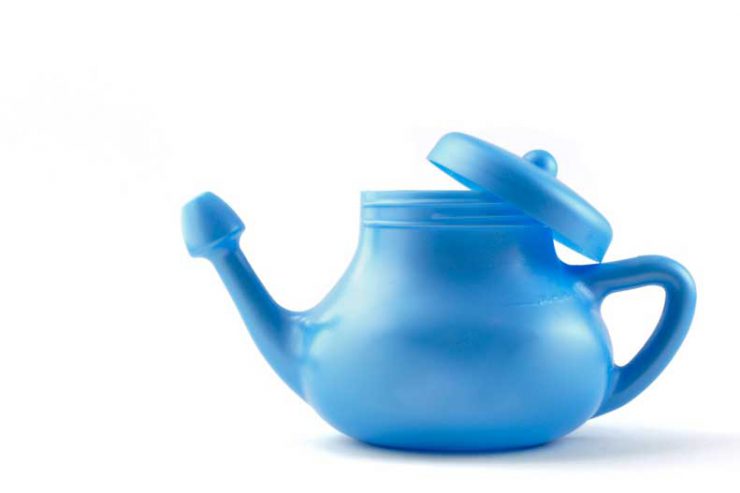Many people use neti pots to relieve the sniffing, sneezing, and congestion from colds and allergies.
While the idea of nasal irrigation may seem strange at first, rinsing your sinuses can effectively flush allergens, bacteria, and thin mucus — so you can breathe easier.
Before you give it a try, learn the basics about how neti pots work and how to safely use them.
What Is a Neti Pot?
A neti pot is a teapot-shaped container, usually made of plastic or ceramic, filled with warm water and a special saline solution to rinse out your sinuses. You can purchase a neti pot at most pharmacies, and many come with pre-packaged kits that include the saline solution.
How Do I Use a Neti Pot?
- Before using a neti pot, make sure that it is clean. Wash your hands first, then wash the pot in distilled, filtered, or previously boiled and cooled water.
- Fill the pot with warm distilled, filtered, or previously boiled and cooled water and add the saline mixture. If you don’t have a kit that includes the pre-packaged solution, you can make your own by mixing 1 teaspoon of table, kosher, or sea salt with a pinch of baking soda.
- Standing over your sink, tilt your head to one side, open your mouth to breathe, and pour the water into one nostril. The water will flow into your sinus cavity and out the other nostril. Gently blow your nose, then repeat on the other side.
- Once you’re finished, wash the neti pot again with distilled, filtered, or previously boiled and cooled water.
Are Neti Pots Safe?
You may have heard that using a neti pot isn’t safe because there is a risk of bacteria getting into your body. This can happen if you don’t use distilled, filtered, or previously boiled and cooled water, but in general, neti pots are considered safe to use.
Always read the package instructions before using a neti pot. If there are no directions, talk with your doctor about how to use it safely.
Learn more by visiting the UPMC Ear, Nose, and Throat services webpage.
